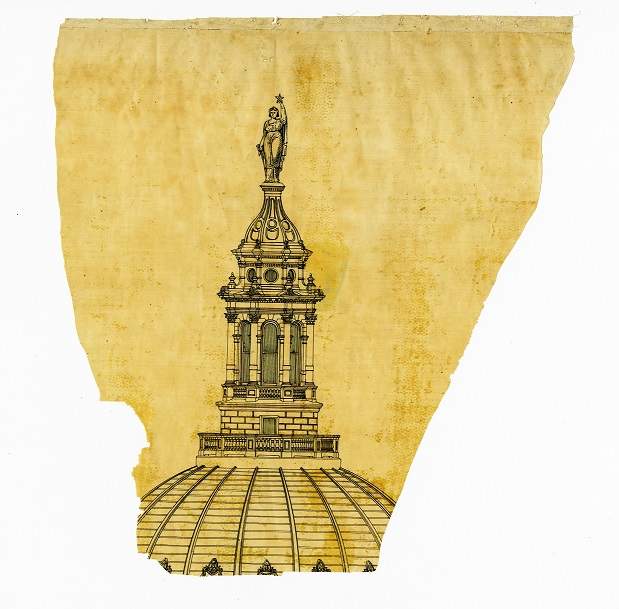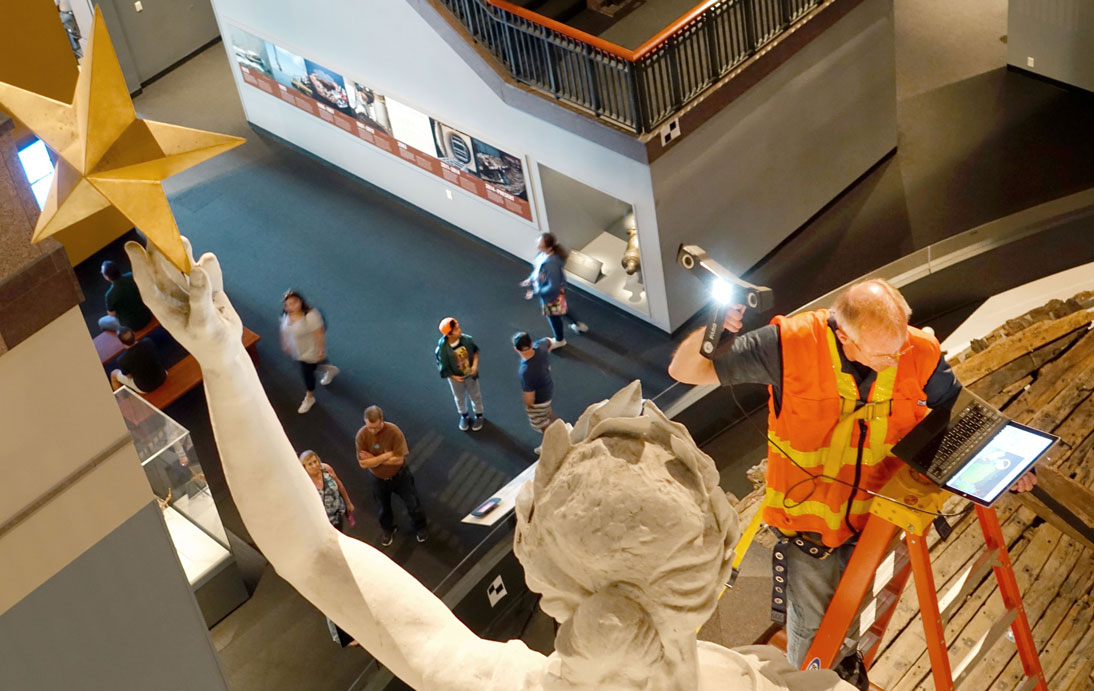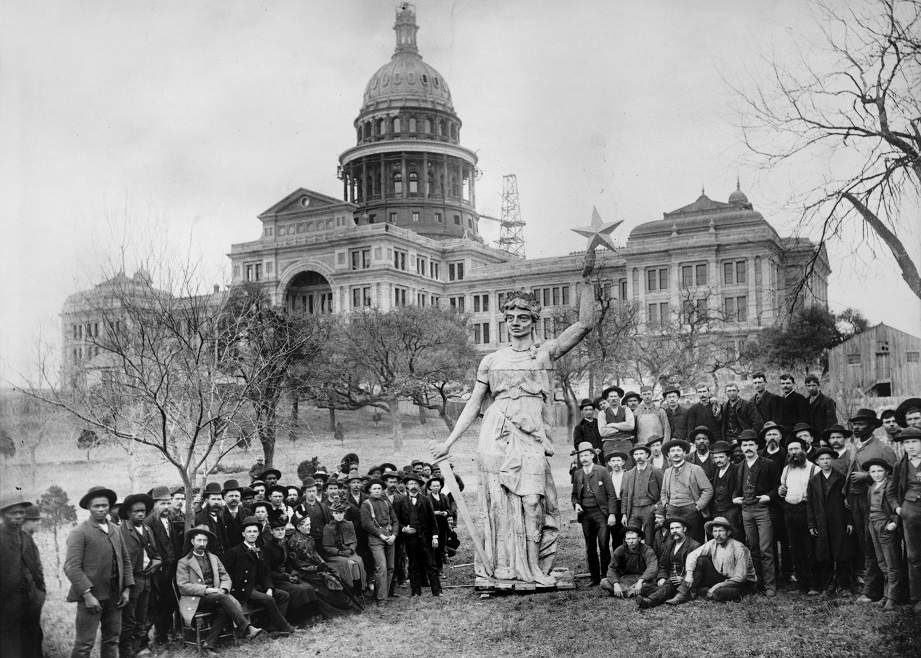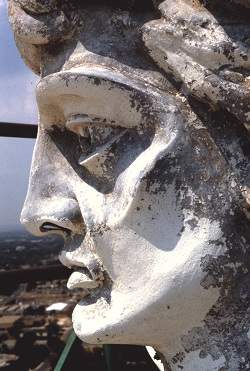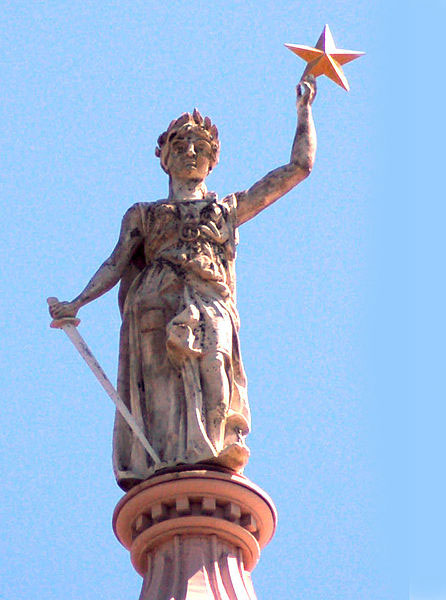Goddess of Liberty
Crowning the dome of the Texas State Capitol.
High atop the Capitol dome– sword of justice in one hand and a gilded Lone Star in the other– the Goddess has watched over Texas since 1888.
Based on Greek and Roman architectural details, the Goddess of Liberty was designed by Detroit's Elijah E. Myers, architect of the Texas Capitol, and was included in his original contest drawings submitted in 1881. The Texas Goddess is probably based on similar 19th century statues of the Greek goddess Athena and represents truth, justice, and art. Standing sixteen feet high, the original Goddess was installed on top of the Texas Capitol in late February, 1888.
On June 14, 1986, amid high winds and held breaths, the new Goddess replica was placed on top of the Capitol dome. The original Goddess of Liberty was restored and taken on a short tour to Fort Worth and the State Fair of Texas in Dallas in 1986. After nearly 100 years atop the Capitol dome, the original Goddess of Liberty now lives at the Bullock Texas State History Museum in Austin.
2017 Conservation Project
The original 1888 Goddess of Liberty statue that graced the top of the Texas State Capitol Building dome for nearly 100 years is one of the most significant and prominent artifacts in the Bullock Museum. A Texas treasure, it is part of the State Preservation Board's Capitol Historical Artifact Collection and is on permanent exhibition, towering over the Bullock Museum's main galleries. In 2017, a generous grant from the Bank of America Art Conservation Project provided funds for a specialized, comprehensive cleaning and minor repairs to the exterior paint layer by a nationally recognized art conservator. Work performed during public hours meant visitors were able to see the science and care that goes into artifact care at the Museum. Digital mapping of the statue is being used to create a three-dimensional, detailed archival record of the Goddess.
Constructing a Goddess
The Texas Capitol's goddess was constructed primarily of galvanized iron and zinc. The eighty separate pieces were then welded together to form four sections: the torso, two arms, and the head. Seen from the ground, the Goddess looks like the stately figure she is intended to be. Seen up close, however, she's not quite so attractive. But that's for a reason. The Goddess's facial features were exaggerated so that she would look normal to people standing 300 feet below her. When she was unveiled, not everybody liked her face, either from far away or up close. A reporter for the Austin Weekly Statesman referred to her as "Old Lady Goddess."
Time for a Facelift
Workers repainting the Capitol dome in 1983 noticed significant deterioration along the back of the Goddess's arms and right hand, as well as her sword. After being perched on the dome for nearly 100 years, pollution, lightning, temperature changes, and wind had taken their toll on the statue's impure original materials. The Goddess standing tall today isn't the original goddess from 1888. The State Preservation Board (SPB), the state agency responsible for the care of the Capitol, removed the original statue from the dome by helicopter in 1985 and placed it carefully on the south lawn. Many people came to look at the Goddess up close and make their own determinations about those facial features.
Goddess Lore
Some say the original Goddess housed a hive of bees up her nose. There's also the tall tale that one stormy night long ago she was left hanging from the dome by a single rusty bolt. Republicans and Democrats scaled the dome and together managed to stand her up and bolt her down. Then there's the story that many men have claimed that their wives or sweethearts were the model for the original Goddess, including her face. The historical record doesn't show any woman who actually claimed that, however.
